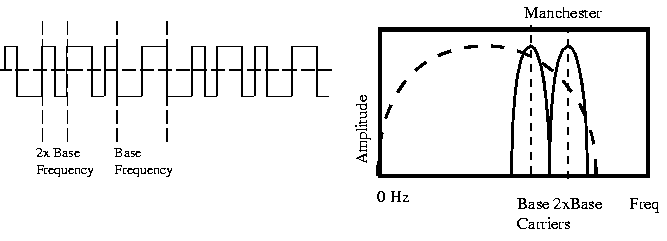| Introduction to Data Communications | ||
|---|---|---|
|
|
33a. Clocking: Self & Manchester Encoding | Next |
In the Manchester Code, there is a transition at the middle of each bit period. The mid-bit transition serves as a clocking mechanism and also as data: a low to high transition represents a 1 and a high to low transition represents a 0.

Manchester Encoding has no DC component and there is always a transition available for synchronizing receive and transmit clocks. Because of the continuous presence of these transitions, Manchester Encoding is also called a self clocking code.

It has the added benefit of requiring the least amount of bandwidth compared to the other Line Codes (Unipolar, Polar, etc..). Manchester coding requires 2 frequencies: the base carrier and 2 x the carrier frequency. All other types of Line Coding require a range from 0 hertz to the maximum transfer rate frequency. In other words, Manchester Encoding requires a Narrow Bandwidth
| Introduction to Data Communications | ||
|---|---|---|
|
|
Table of Contents | Next |